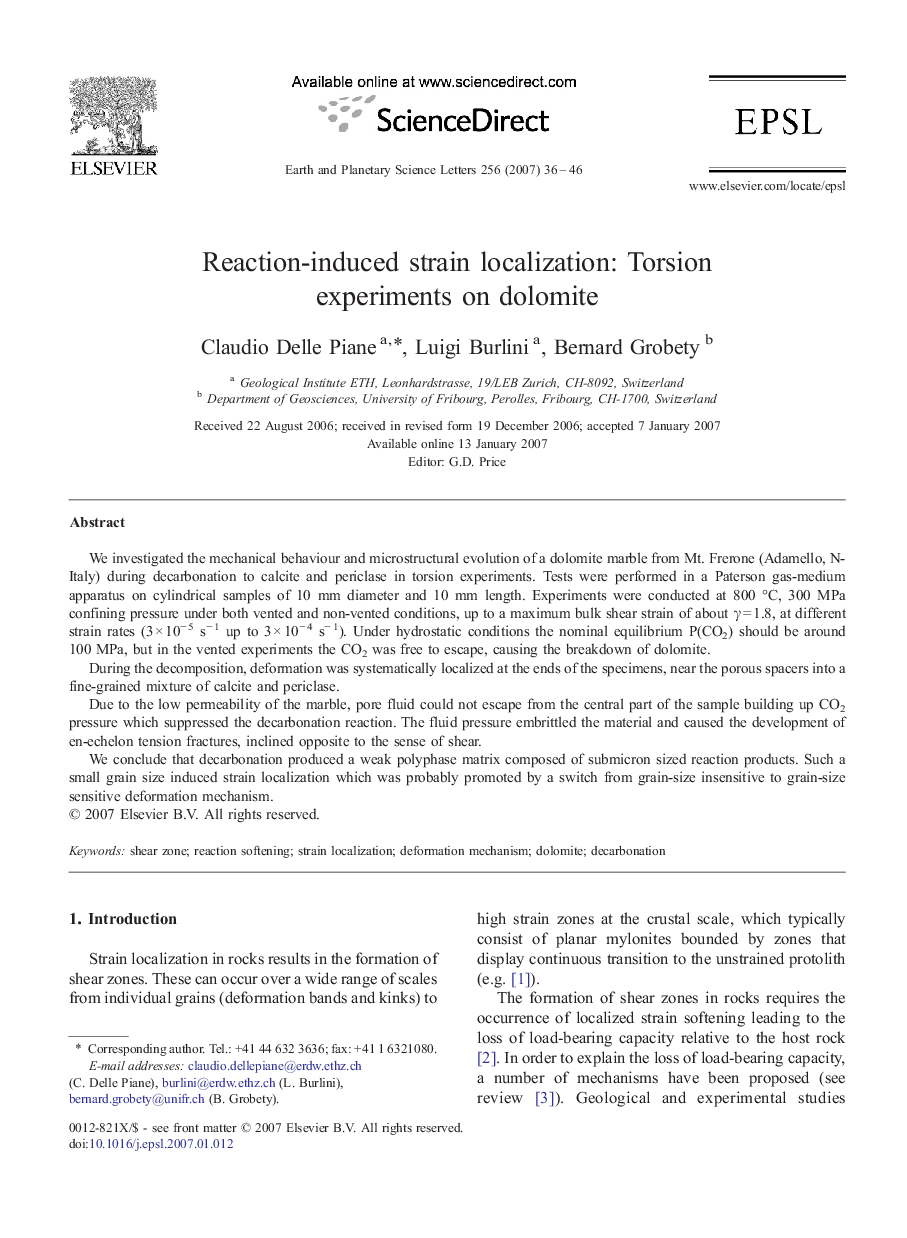| کد مقاله | کد نشریه | سال انتشار | مقاله انگلیسی | نسخه تمام متن |
|---|---|---|---|---|
| 4680465 | 1634923 | 2007 | 11 صفحه PDF | دانلود رایگان |

We investigated the mechanical behaviour and microstructural evolution of a dolomite marble from Mt. Frerone (Adamello, N-Italy) during decarbonation to calcite and periclase in torsion experiments. Tests were performed in a Paterson gas-medium apparatus on cylindrical samples of 10 mm diameter and 10 mm length. Experiments were conducted at 800 °C, 300 MPa confining pressure under both vented and non-vented conditions, up to a maximum bulk shear strain of about γ = 1.8, at different strain rates (3 × 10− 5 s− 1 up to 3 × 10− 4 s− 1). Under hydrostatic conditions the nominal equilibrium P(CO2) should be around 100 MPa, but in the vented experiments the CO2 was free to escape, causing the breakdown of dolomite.During the decomposition, deformation was systematically localized at the ends of the specimens, near the porous spacers into a fine-grained mixture of calcite and periclase.Due to the low permeability of the marble, pore fluid could not escape from the central part of the sample building up CO2 pressure which suppressed the decarbonation reaction. The fluid pressure embrittled the material and caused the development of en-echelon tension fractures, inclined opposite to the sense of shear.We conclude that decarbonation produced a weak polyphase matrix composed of submicron sized reaction products. Such a small grain size induced strain localization which was probably promoted by a switch from grain-size insensitive to grain-size sensitive deformation mechanism.
Journal: Earth and Planetary Science Letters - Volume 256, Issues 1–2, 15 April 2007, Pages 36–46